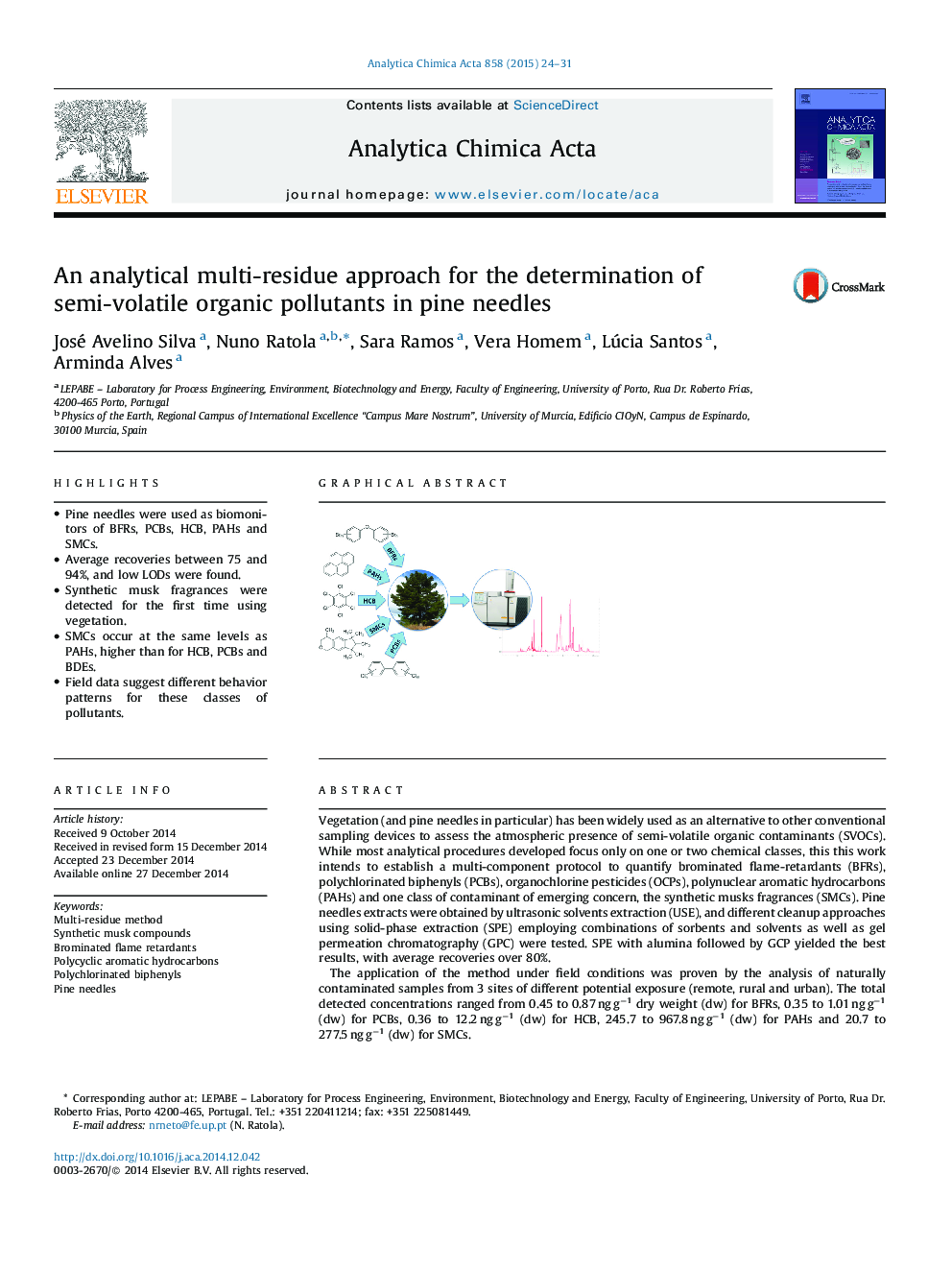| کد مقاله | کد نشریه | سال انتشار | مقاله انگلیسی | نسخه تمام متن |
|---|---|---|---|---|
| 1164083 | 1490974 | 2015 | 8 صفحه PDF | دانلود رایگان |
• Pine needles were used as biomonitors of BFRs, PCBs, HCB, PAHs and SMCs.
• Average recoveries between 75 and 94%, and low LODs were found.
• Synthetic musk fragrances were detected for the first time using vegetation.
• SMCs occur at the same levels as PAHs, higher than for HCB, PCBs and BDEs.
• Field data suggest different behavior patterns for these classes of pollutants.
Vegetation (and pine needles in particular) has been widely used as an alternative to other conventional sampling devices to assess the atmospheric presence of semi-volatile organic contaminants (SVOCs). While most analytical procedures developed focus only on one or two chemical classes, this this work intends to establish a multi-component protocol to quantify brominated flame-retardants (BFRs), polychlorinated biphenyls (PCBs), organochlorine pesticides (OCPs), polynuclear aromatic hydrocarbons (PAHs) and one class of contaminant of emerging concern, the synthetic musks fragrances (SMCs). Pine needles extracts were obtained by ultrasonic solvents extraction (USE), and different cleanup approaches using solid-phase extraction (SPE) employing combinations of sorbents and solvents as well as gel permeation chromatography (GPC) were tested. SPE with alumina followed by GCP yielded the best results, with average recoveries over 80%.The application of the method under field conditions was proven by the analysis of naturally contaminated samples from 3 sites of different potential exposure (remote, rural and urban). The total detected concentrations ranged from 0.45 to 0.87 ng g−1 dry weight (dw) for BFRs, 0.35 to 1.01 ng g−1 (dw) for PCBs, 0.36 to 12.2 ng g−1 (dw) for HCB, 245.7 to 967.8 ng g−1 (dw) for PAHs and 20.7 to 277.5 ng g−1 (dw) for SMCs.This methodology is a viable approach for the simultaneous analysis of five different classes of atmospheric pollutants employing less analytical efforts. Moreover, to the author’s best knowledge, this is also the first time vegetation is employed in the detection of SMCs.
Figure optionsDownload as PowerPoint slide
Journal: Analytica Chimica Acta - Volume 858, 9 February 2015, Pages 24–31
